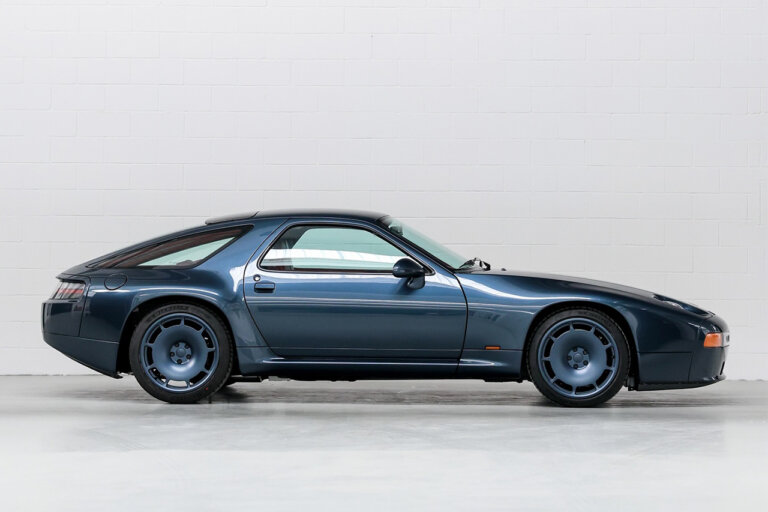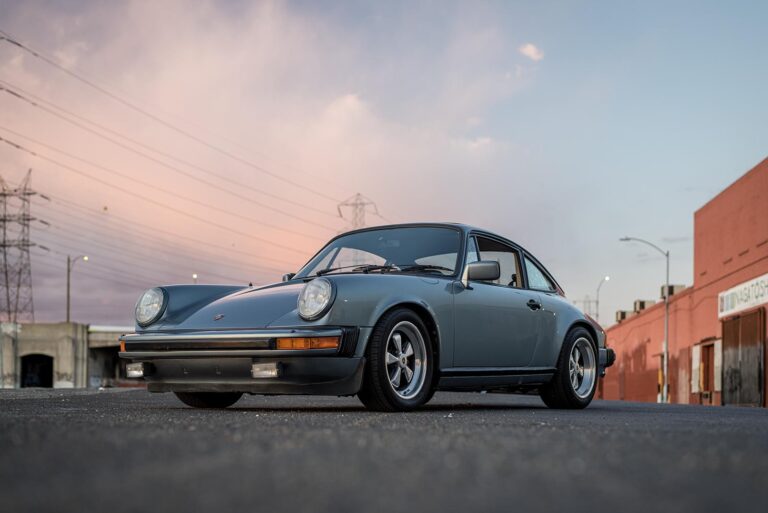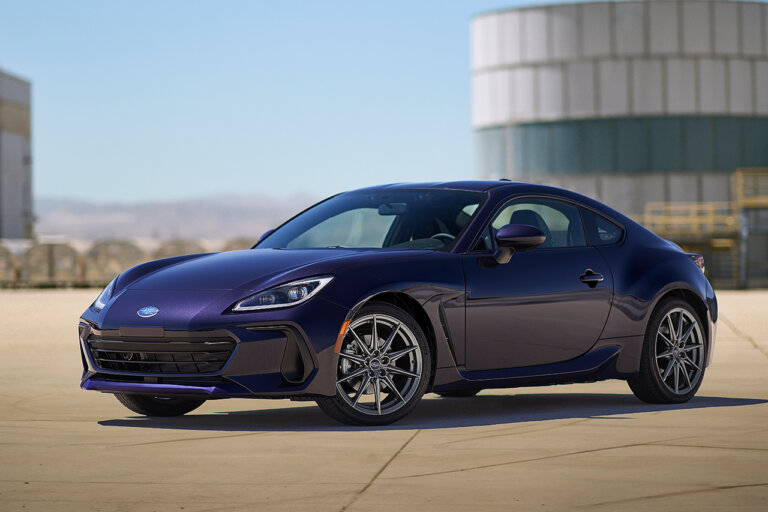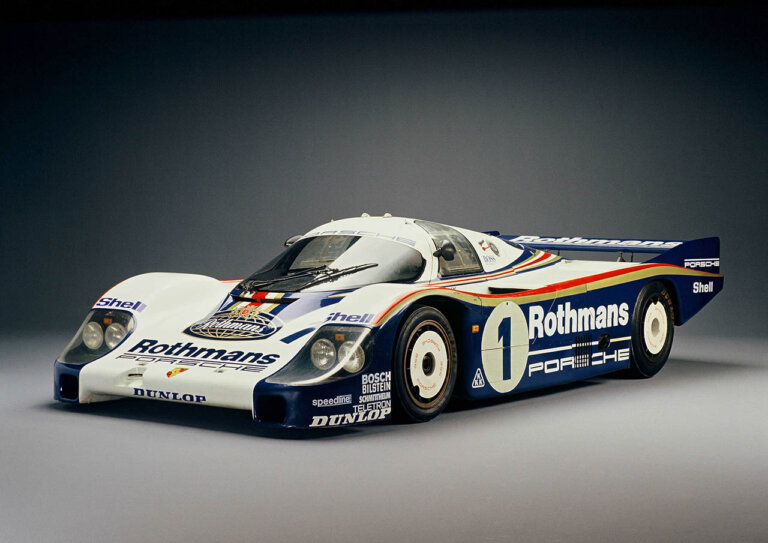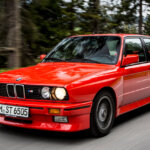The Bronco Generations
First Generation | 1966-1977
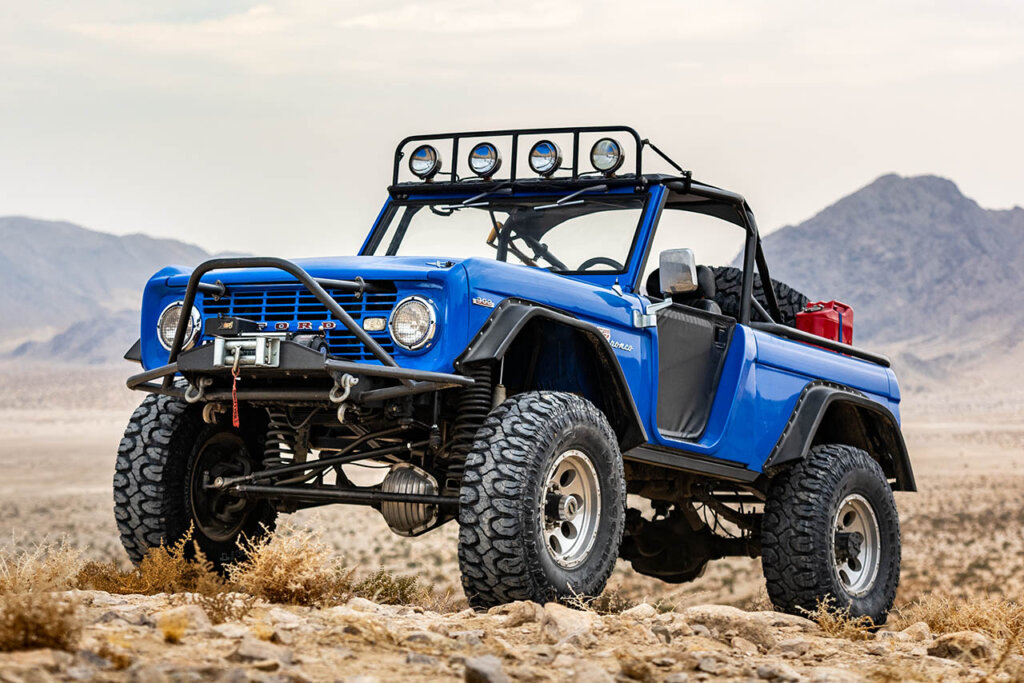
Source: Motofutura
At the core of the first-generation Bronco’s design philosophy was a commitment to simplicity and efficiency, evident in the straightforward styling choices. The design featured flat glass surfaces, straight C-section bumpers, and symmetrical left and right door skins (before the installation of door-mounting hardware). The first generation Broncos were constructed on a dedicated chassis specifically built for this model line, distinguishing it from any other Ford or Lincoln-Mercury vehicle. With a 92-inch wheelbase, strategically positioned between the CJ-5 and the Scout and a mere inch shorter than the subsequent CJ-7, the Bronco boasted a box-section body-on-frame construction.
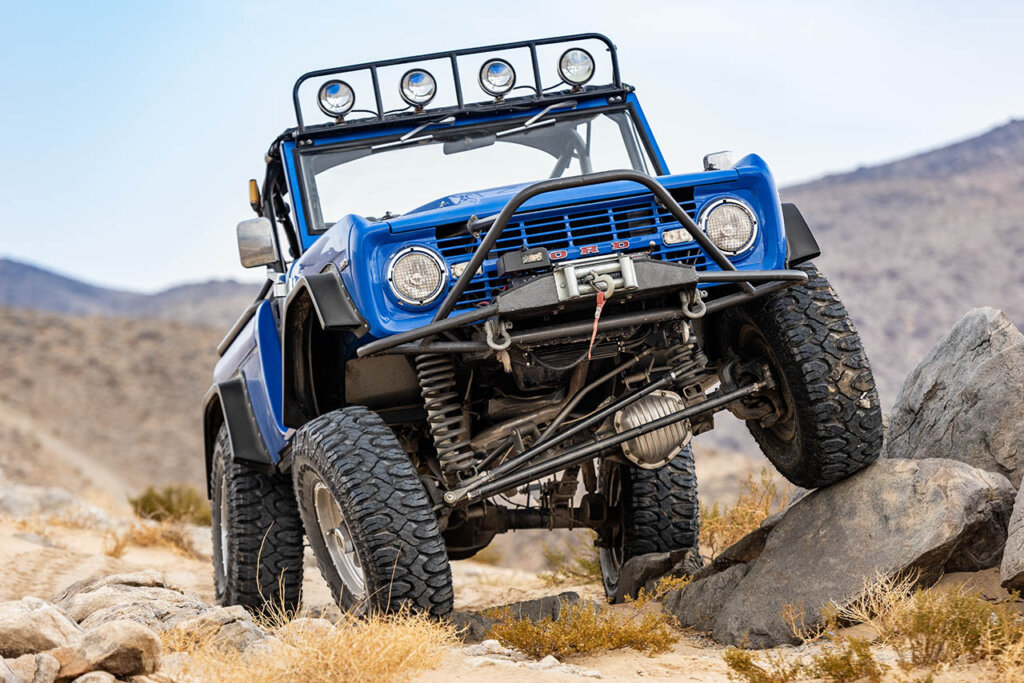
To streamline production processes, all units were outfitted with four-wheel drive, featuring a shift-on-the-fly Dana 20 transfer case and standard locking hubs. The rear axle, a Ford 9-inch axle, employed Hotchkiss drive and leaf springs, while the front axle began as a Dana 30, later replaced by a Dana 44 in 1971. Departing from the Twin I-Beams seen in larger Ford trucks, the Bronco adopted radius arms to secure the coil-sprung front axle, complemented by a lateral track bar. This configuration allowed for a remarkable 34-foot turning circle, extended wheel travel, and antidive geometry, particularly advantageous for snowplowing. For those seeking enhanced capabilities, a sturdier suspension system and optional air front springs were available choices.

Source: Motofutura
The Bronco was initially equipped with a 170-cubic-inch inline-six engine. Adapted from the Ford Falcon, this 105-hp powerhouse underwent modifications such as solid valve lifters, a 6-US-quart (6 L) oil pan, a heavy-duty fuel pump, an oil-bath air cleaner, and a carburetor with a float bowl designed to counter tilting. By March 1966, a 200-hp 289-cubic-inch V8 became an available option. By the 1969 model year, the 289 V8 underwent enlargement, becoming a 302-cubic-inch engine that persisted until the end of the 1977 model year. In 1973, a 200-cubic-inch inline-six engine took over as the standard powerplant, remaining in production through 1977.
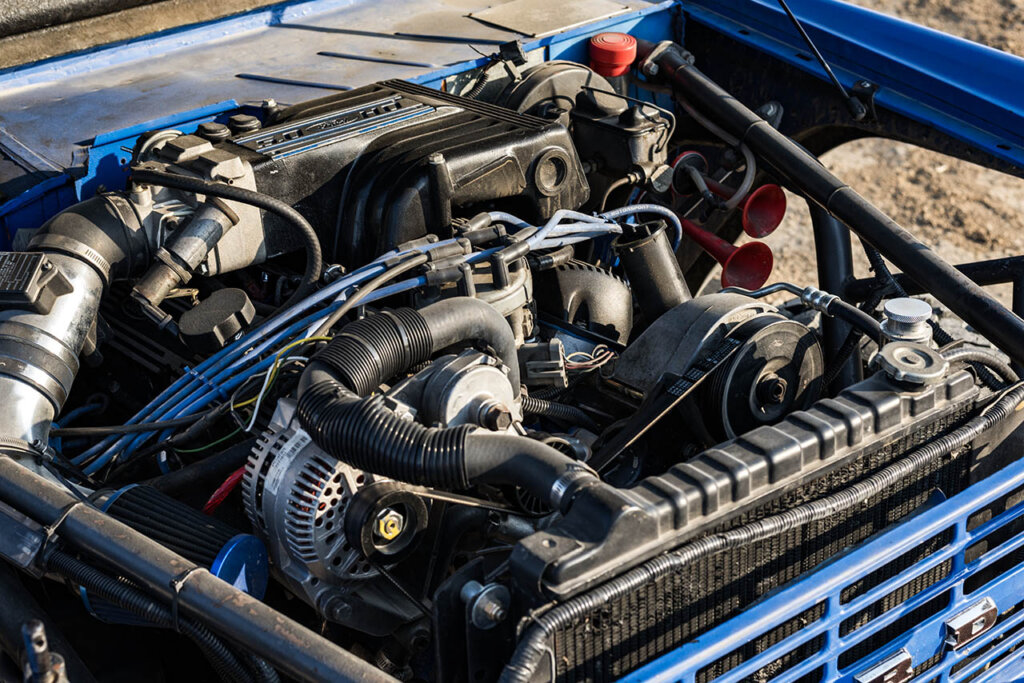
Second Generation | 1978-1979
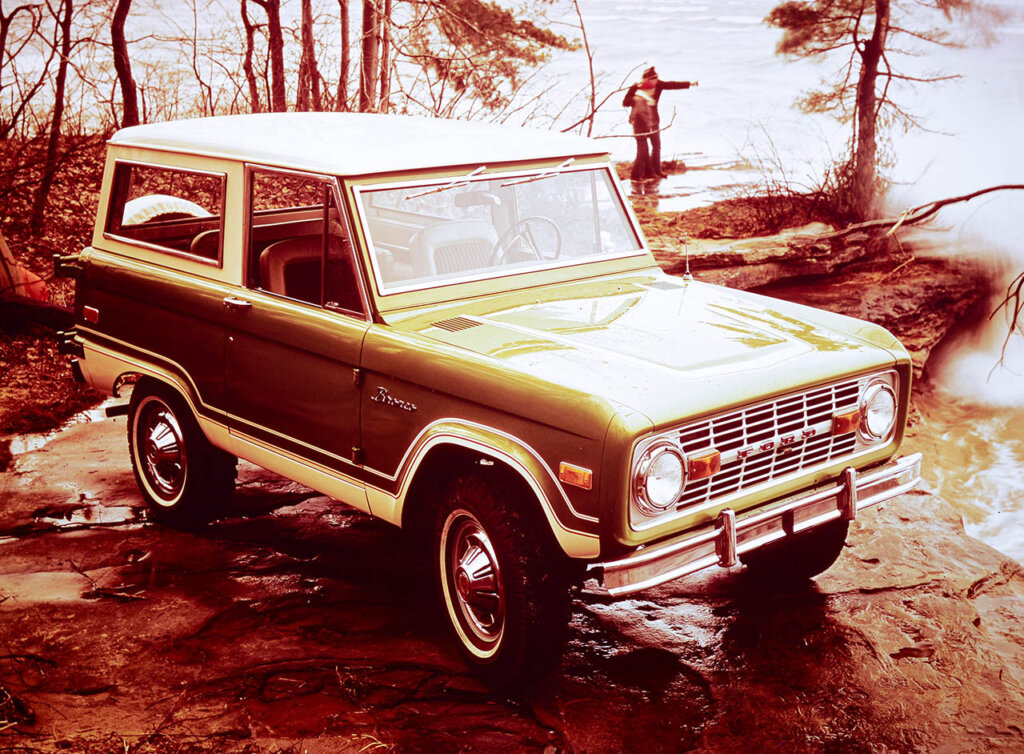
Source: Ford Media Center
Initially scheduled for a 1974 debut, the second-generation Bronco, known as “Project Shorthorn” during its development, was delayed to 1978 due to concerns about the fuel economy from the 1973 fuel crisis. Consequently, the release of the second-generation Bronco for sale occurred when the development of its 1980 successor was almost complete. Despite its brief two-year production span, the second-generation Bronco achieved considerable success, surpassing the Blazer and Ramcharger in sales for the first time. The initial demand was so high that customers faced wait times of several months before receiving their vehicles from dealerships.
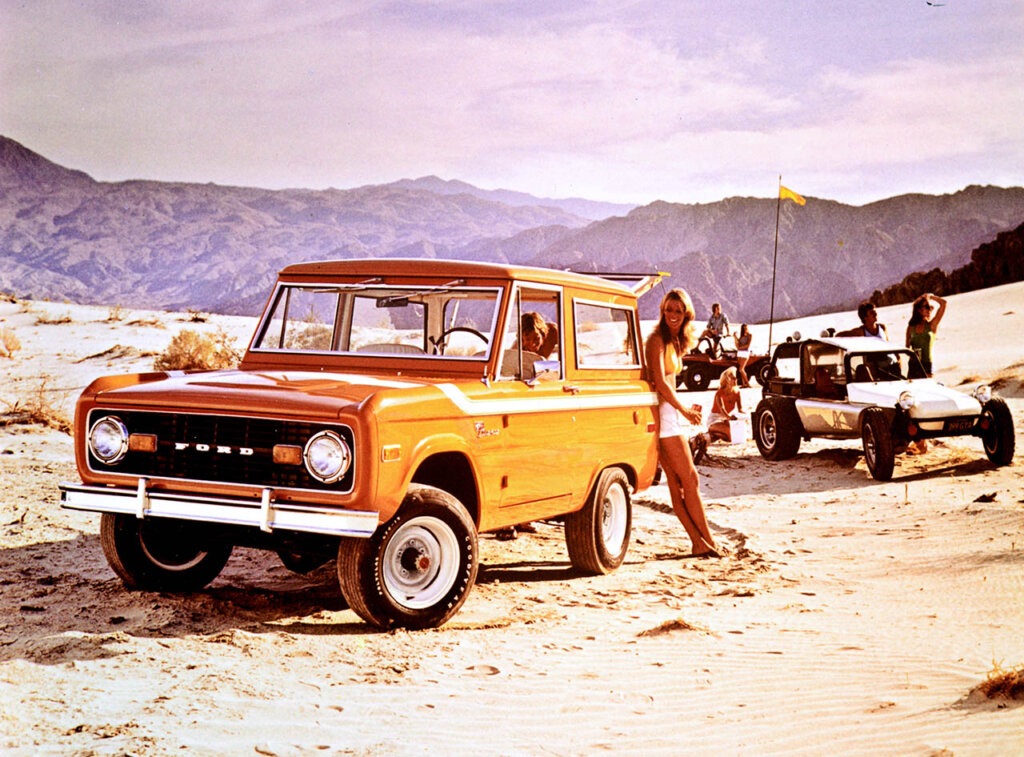
Replacing the diverse body configurations of its predecessor, the second-generation Bronco streamlined its options, exclusively offering a 3-door wagon with a removable rear hardtop. During development, Ford prioritized incorporating bodywork from the F-100 with minimal adjustments. Like its chassis, the second-generation Bronco heavily borrowed elements from the F-Series truck line, sharing components such as doors, the front roofline, sheet metal, and the interior. While maintaining the wagon body style of the earlier model, Ford designers departed from a full-length hardtop (as seen in the previous Bronco and the Jeep CJ-7) in favor of a lift-off hardtop situated behind the B-pillars. This configuration increased compatibility with the F-100 by sharing doors and the overhead roof stamping. Attention was specifically directed towards minimizing leaks around the top seals, addressing an issue associated with the design of the K5 Blazer hardtop of that era.
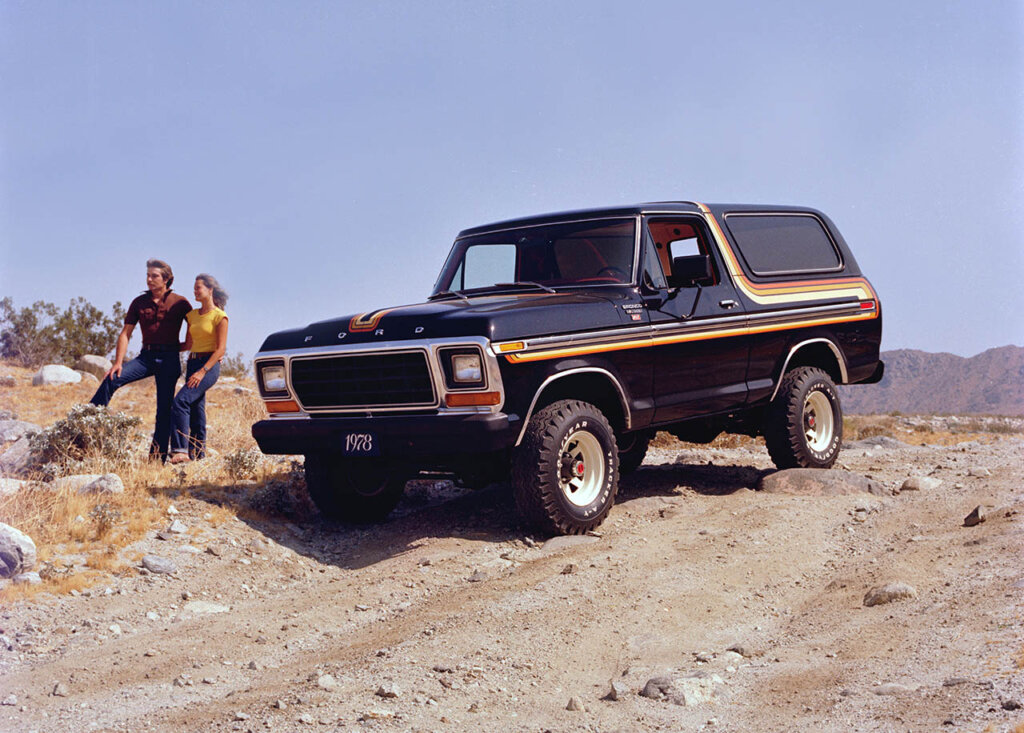
The second-generation Bronco presented a choice between two distinct V8 engines: the 5.8L 351M and the 6.6L 400. Despite yielding nearly identical horsepower, the 400 exhibited a superior torque output compared to the 351M. Notably, the 460 V8, exclusive to rear-wheel drive F-Series trucks, was not made available for the Bronco.
Third Generation | 1980-1986
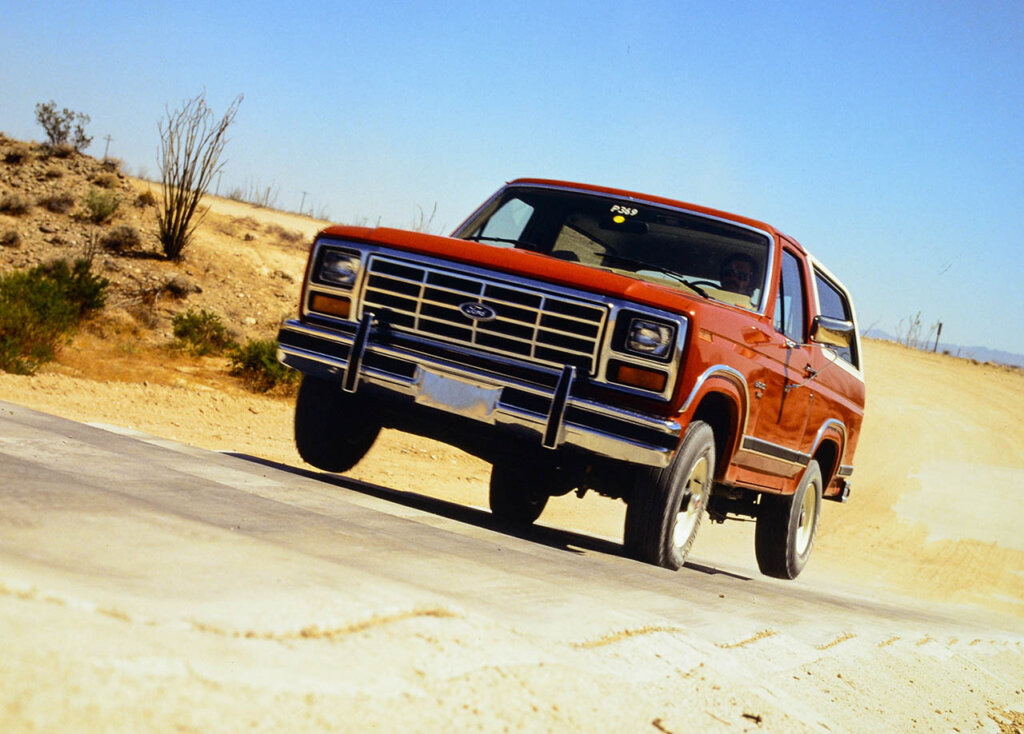
Source: Ford Media Center
The third generation of Ford Broncos was designed to address the issues the 1978-1979 Broncos that went out of production. Much shorter and lighter than the previous gen, the new Bronco was built to be more efficient while retaining its full-size dimensions. Similar to its 1978–1979 forerunner, the 1980–1986 Bronco extensively shares external sheet metal with the F-Series pickup line, employing identical components from the doors forward. Rooted in a design proposal originally utilized during the development of the previous-generation Bronco, slight modifications were made to the B-pillar of the roofline to enhance the seal for the hardtop.[16] Prior to 1984, the hardtop even offered sliding window glass as an optional feature. In 1982, the Bronco underwent a modest facelift, incorporating Ford’s blue oval emblem, which replaced the “F-O-R-D” lettering on the hood and the bronco horse was omitted from the fender emblems.
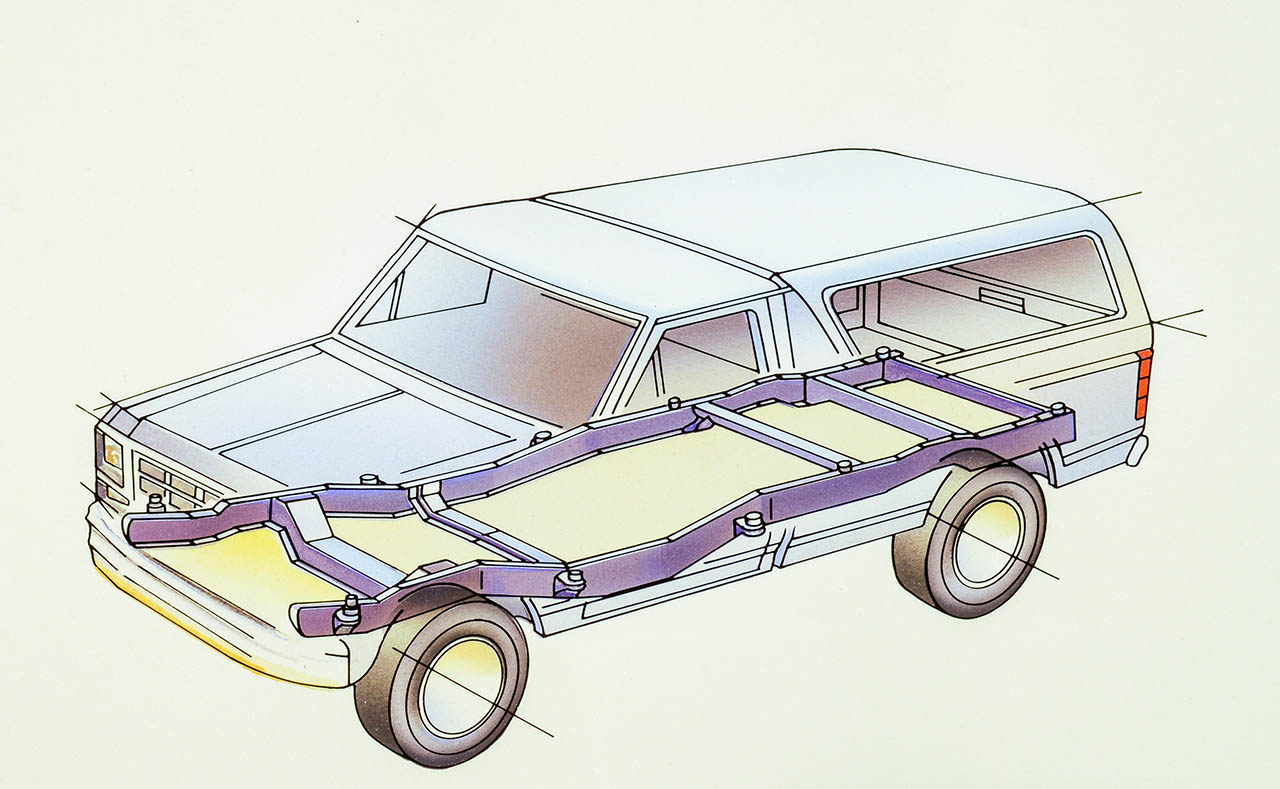
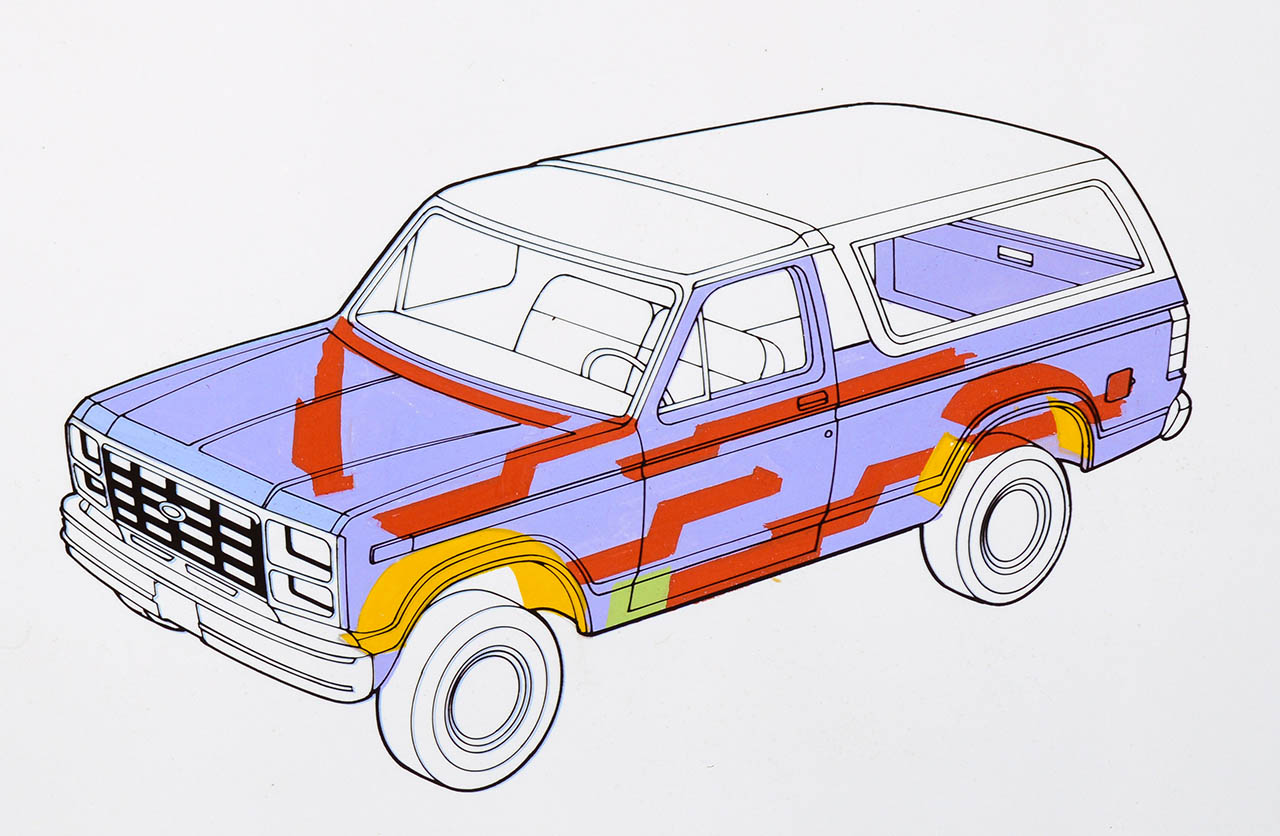
Derived once again from the Ford F-Series, the 1980–1986 Bronco shares its foundation with the Ford F-150 (1980–1986 seventh generation). Despite adopting an entirely new chassis, the Bronco maintained its 104-inch (2,642 mm) wheelbase. In an effort to enhance fuel efficiency through weight reduction, Ford engineers reduced the weight by 375 pounds (170 kg) from the previous year’s curb weight. The 1980-81 models featured a notably lighter frame, achieved by factory-stamped holes. However, in 1982, this frame design was replaced for improved strength and rigidity, resulting in a 31-pound (14 kg) increase in curb weight. Additionally, both transfer cases were swapped out for either a New Process 208 or Borg Warner 1345 version.
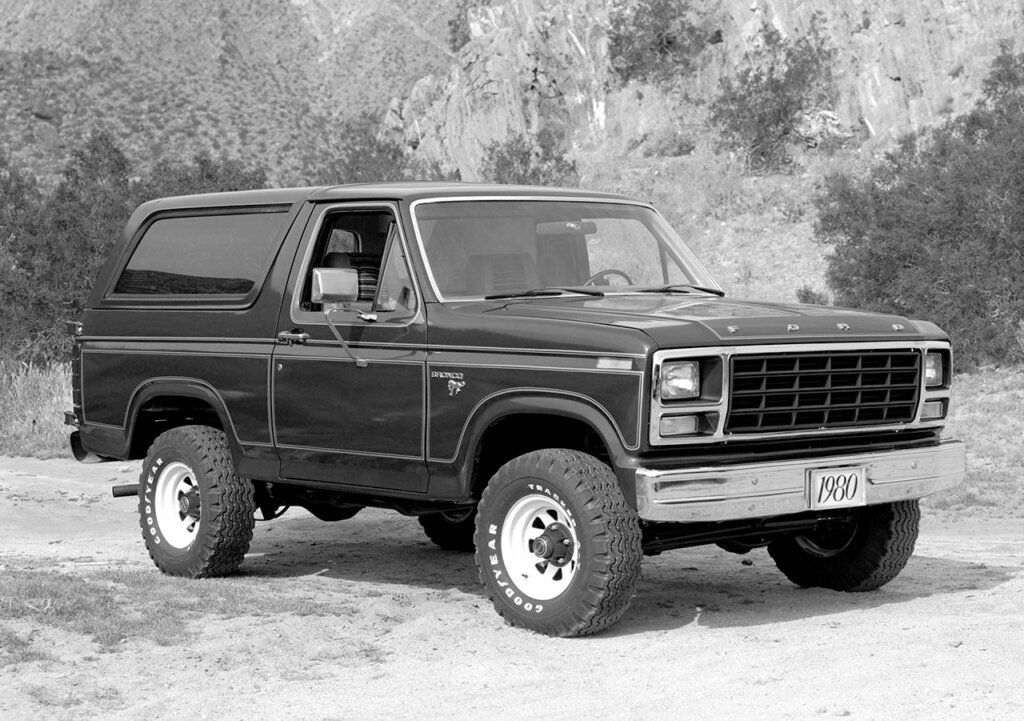
Breaking a tradition that lasted since 1977, the Bronco reintroduced an inline-six engine as the standard offering. The 4.9L 300 I6 was exclusively paired with a manual transmission. The 400 V8 was phased out, making way for the 351M, while the 302 V8 returned as the base-equipment V8. In 1982, the 351 Windsor made its debut in the Bronco, replacing the 351M, and gained a “high-output” version with 210 hp in 1984. By 1985, the 5.0L V8 (302) underwent a significant upgrade, with its carburetor being replaced by a multiport electronic fuel injection system, resulting in a power increase to 190 hp (the standard 156 hp 5.8L V8 was discontinued for 1986).
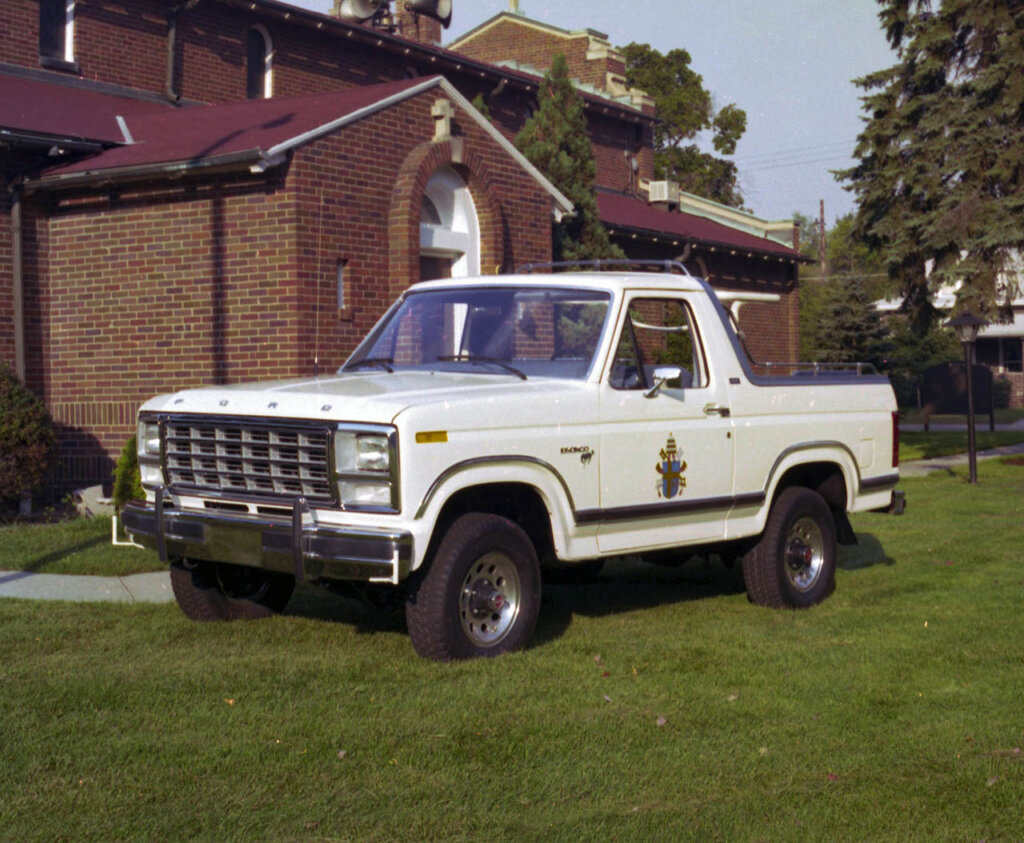
Fourth Generation | 1987-1991
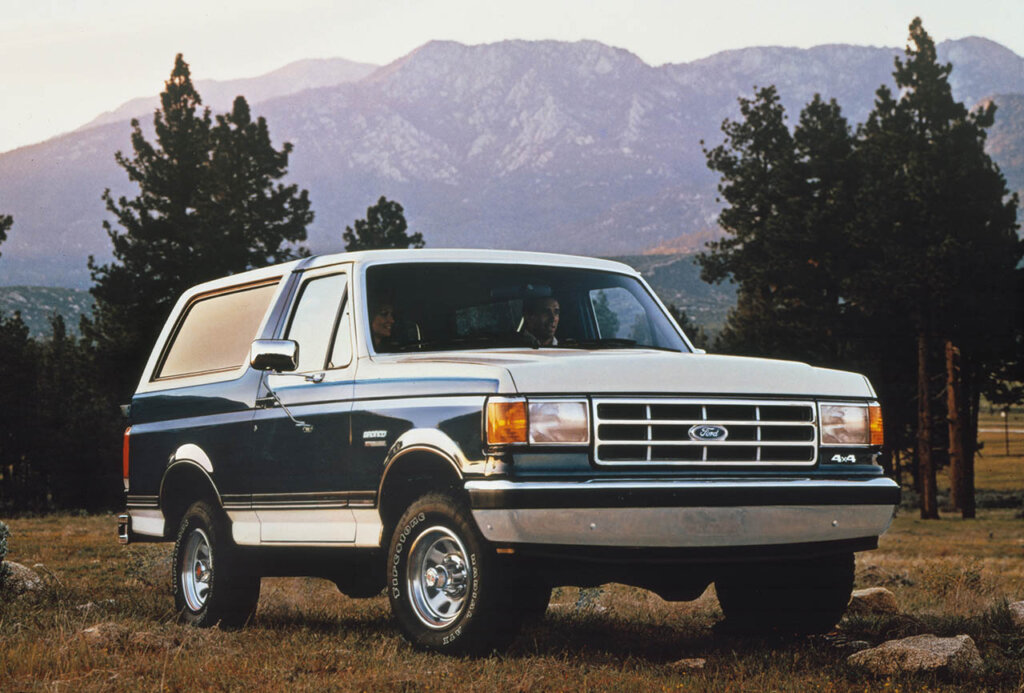
The fourth generation Bronco was released in 1987 and was built as a compact version of the eighth-generation Ford F-150, maintaining its chassis from the preceding generation. Despite this shared foundation, the 1987 Bronco underwent several enhancements in both exterior and interior aspects. Aligned with the F-Series in its front design, the Bronco featured a restructured front bumper, a flatter front grille, and a reshaped hood, with composite headlamps replacing the previous sealed-beam units. Another notable alteration involved a redesign of the wheel openings. The interior received a makeover with updated front seats, door panels, dashboard, and controls, including a new steering wheel and instrument panels.
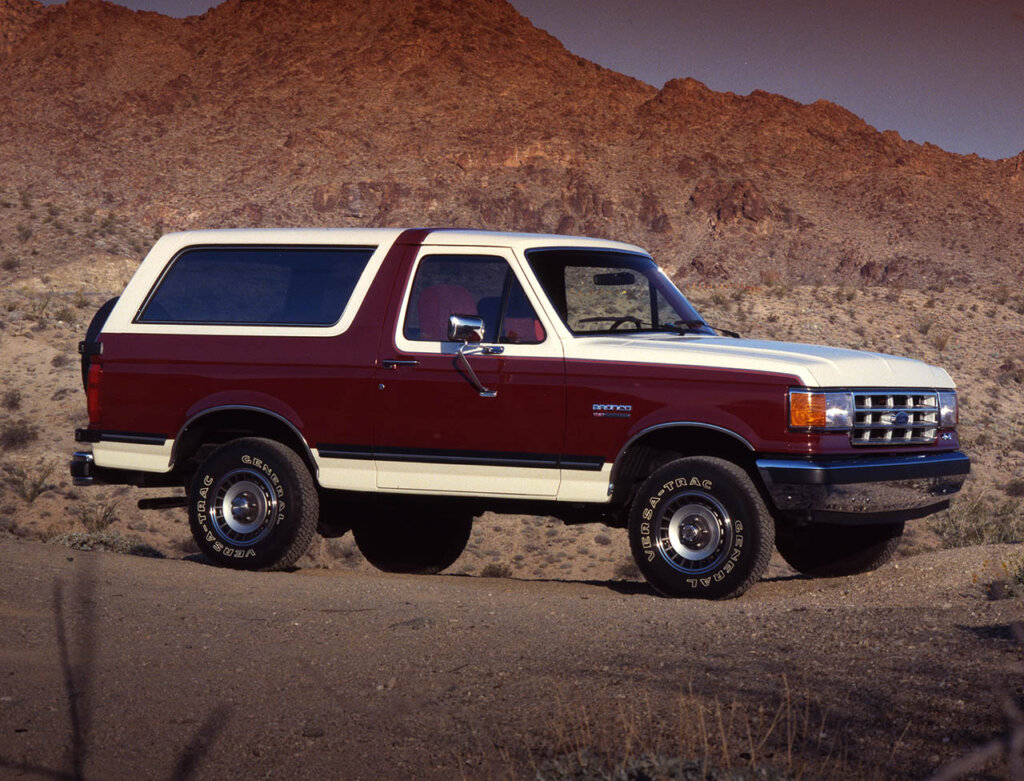
The fourth gen Bronco returned its lineup of engines, featuring the 4.9L inline-6, 5.0L V8, and the 5.8L H.O. V8 carried over from previous generations. Fuel injection, initially introduced on the 5.0L V8 in 1985, was expanded to the inline-6 in 1987 and to the 5.8L V8 in 1988. A new addition for the 1988 model year was a 5-speed manual transmission sourced from Mazda. The 3-speed C6 automatic transmission was available from 1987 to 1990, eventually phased out in favor of the overdrive-equipped 4-speed AOD (1990 only) and the sturdier E4OD (1990-1991).
Fifth Generation | 1992-1996
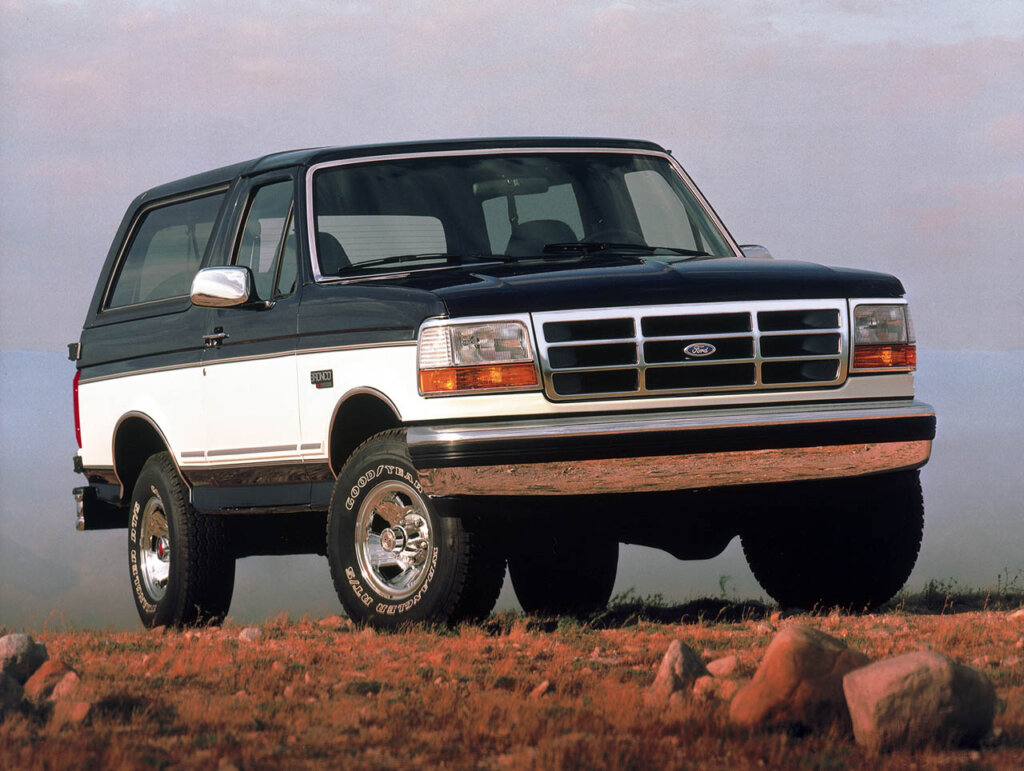
Source: Ford Media Center
In 1992, Ford released their fifth-generation Bronco. The fifth generation Bronco followed the same design development of the ninth-generation Ford F-150. Continuing with the chassis introduced in the 1980 model year, the Bronco’s front fascia underwent further aerodynamic enhancements. Although featuring a larger grille, front bumper, and headlight units, the front fascia was crafted with a subtly rounded design. This model also saw various changes and updates. The interior offered leather front seats for XLT and Eddie Bauer trims, along with optional remote keyless entry and an anti-theft alarm. Power mirrors were introduced in 1992, and the 1996 Bronco became the first Ford vehicle with turn signal lights in its side mirrors. Safety improvements included the transition to a 4-wheel anti-lock braking system in 1993 and the addition of a driver-side airbag in 1994. The redesign also incorporated a front crumple zone into the frame and a center-mounted brake light on the hardtop, which now featured 3-point seatbelts for rear passengers. The fifth-generation Bronco retained the 4.9L inline-6, 5.0L V8, and 5.8L H.O. V8 engines from the previous generation. However, in 1994, the 4.9L inline-6 was phased out, leaving only V8 engines to power the Bronco.
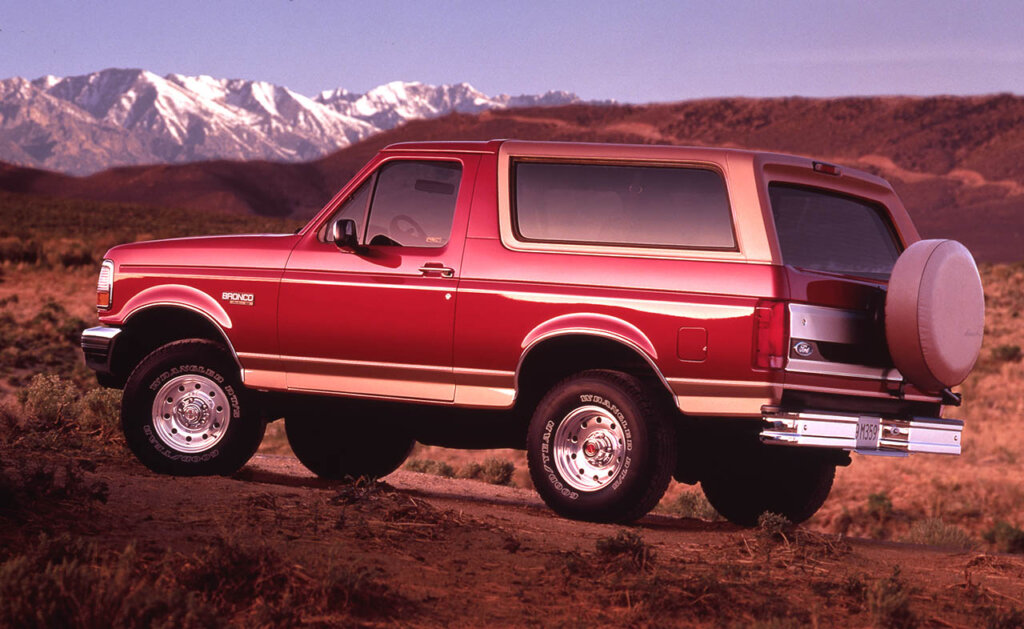
Source: Ford Media Center
What made the fifth generation Bronco stand out from its predecessors was the notoriety it gained from the O.J. Simpson Ford Bronco chase. In June 1994, Al Cowlings drove a white 1993 Bronco XLT with his friend O.J. Simpson in the backseat with the police chasing him on Interstate 405. Al Cowlings eventually did surrender, but left a negative impression on Broncos, especially with 95 million Americans watching the pursuit live. The last fifth gen model was produced in June 1996. Ford stated the discontinuation was unrelated to the O.J. Simpson chase as sales have already been declining before the incident. Ford later introduced the Ford Expedition in 1997 to compete with the Chevrolet/GMC Suburban and the Chevrolet Tahoe/GMC Yukon.
Sixth Generation | 2021 – Present
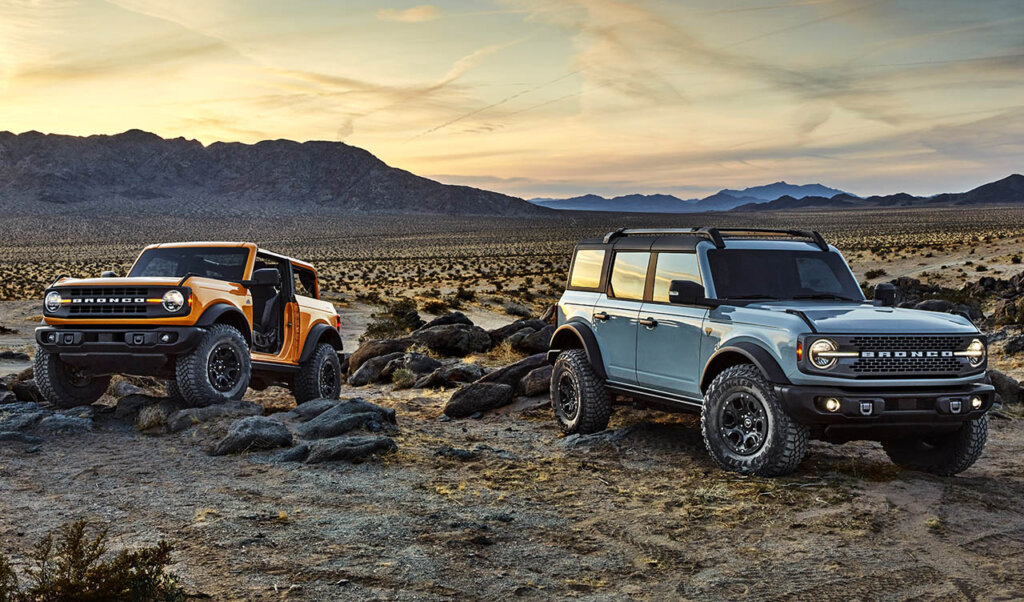
Source: Ford Media Center
After a long 25 years, Ford released their sixth and current generation of Ford Bronco. The potential revival came from 2016 negotiations between Ford and United Auto Workers (UAW). During discussions, there were talks that production of the fourth-generation Ford Focus and the C-Max at Michigan Assembly might cease, with plans for relocation to Mexico. However, the UAW later confirmed that the factory would stay operational, undergoing retooling for the reintroduction of the Ford Ranger in North America and the Ford Bronco. While Ford did not disclose detailed future product plans to the UAW, the company officially announced the return of the Bronco at the 2017 North American International Auto Show. Positioned as a direct competitor to the Jeep Wrangler, Ford revealed plans for both two and four-door variants. Set for a 2021 model year release, the sixth generation would be built on the Ford Ranger platform, maintaining a body-on-frame construction.
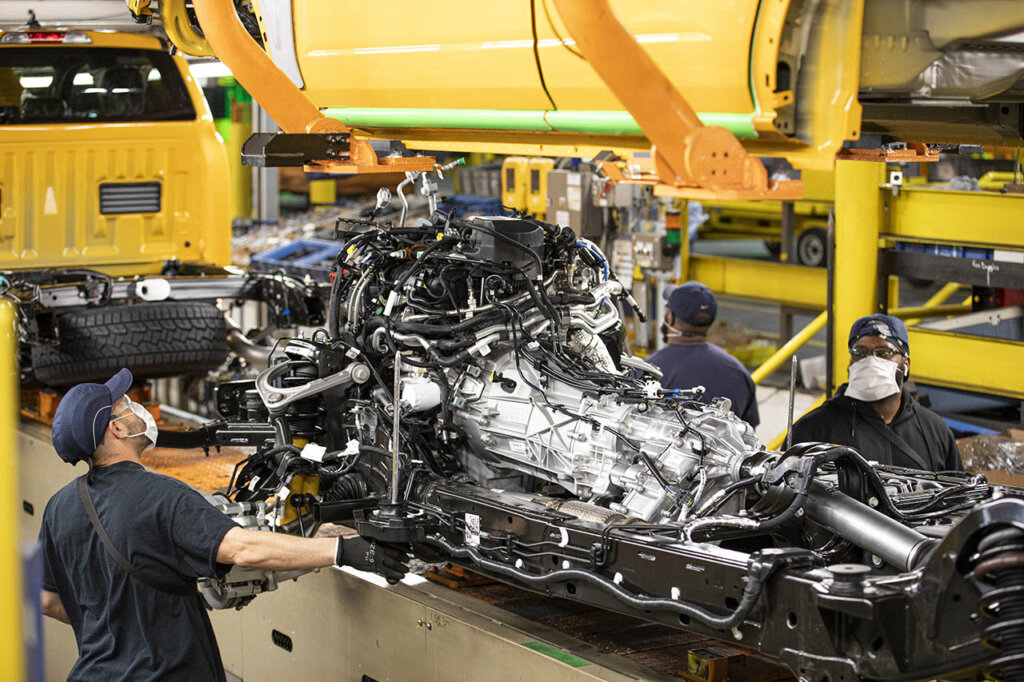
Source: Ford Media Center
The construction utilizes a body-on-frame design with front twin A-arm independent suspension and a rear five-link coilover suspension alongside a solid axle. Opting for the HOSS (High-Performance Off-Road Stability Suspension) setup replaces these components with position-sensitive Bilstein shocks at all four corners, featuring multiple compression and rebound zones. The front sway bar incorporates a hydraulic disconnect, enhancing articulation during crawling and automatically reconnecting at higher speeds. An available package, known as Sasquatch, includes a mild suspension lift and 35-inch tires, making it the largest production vehicle in this regard, second only to the upcoming 3rd generation Ford Raptor, which offers optional 37-inch tires.
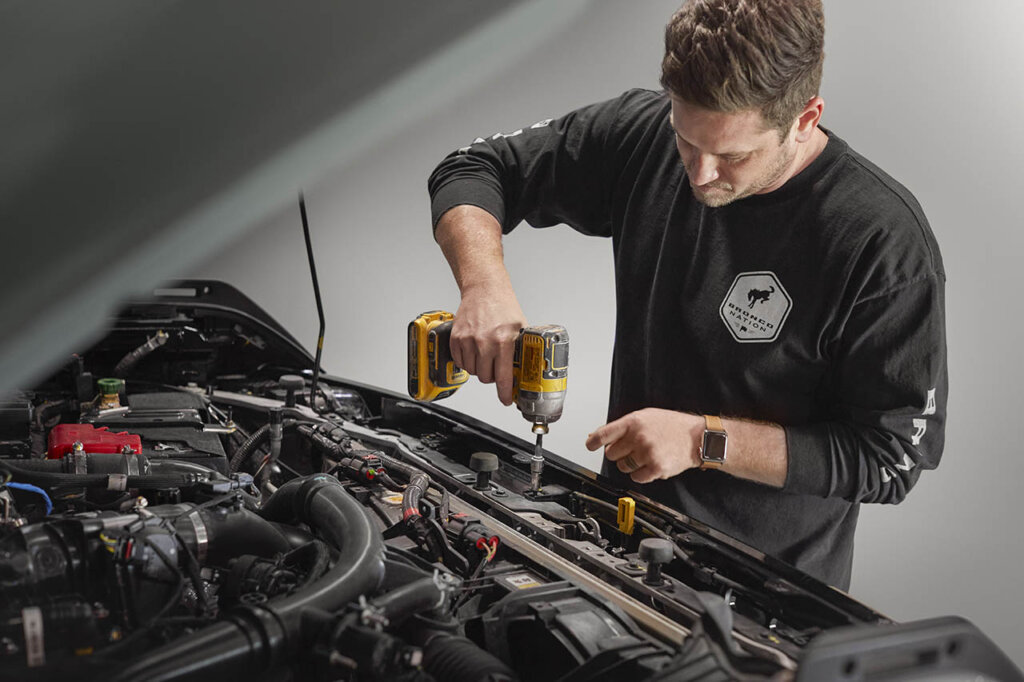
Source: Ford Media Center
The sixth gen Bronco featured a base engine of a 2.3-liter turbocharged EcoBoost inline-four, delivering 300 hp (304 PS; 224 kW) and 325 lb⋅ft (441 N⋅m; 45 kg⋅m) of torque. An optional 2.7-liter twin-turbocharged EcoBoost V6 offers a more powerful performance, producing 330 hp (335 PS; 246 kW) and 415 lb⋅ft (563 N⋅m; 57 kg⋅m) of torque. The 2.7-liter V6 comes exclusively with a 10-speed automatic transmission, while the 2.3-liter engine can be paired with either the 10-speed automatic or a standard 7-speed Getrag manual. Despite its nomenclature, the Getrag transmission is not a true seven-speed unit; it is a traditional six-speed transmission with an additional dedicated crawler gear (labeled as “C” on the shift knob) serving as the “seventh gear.”

